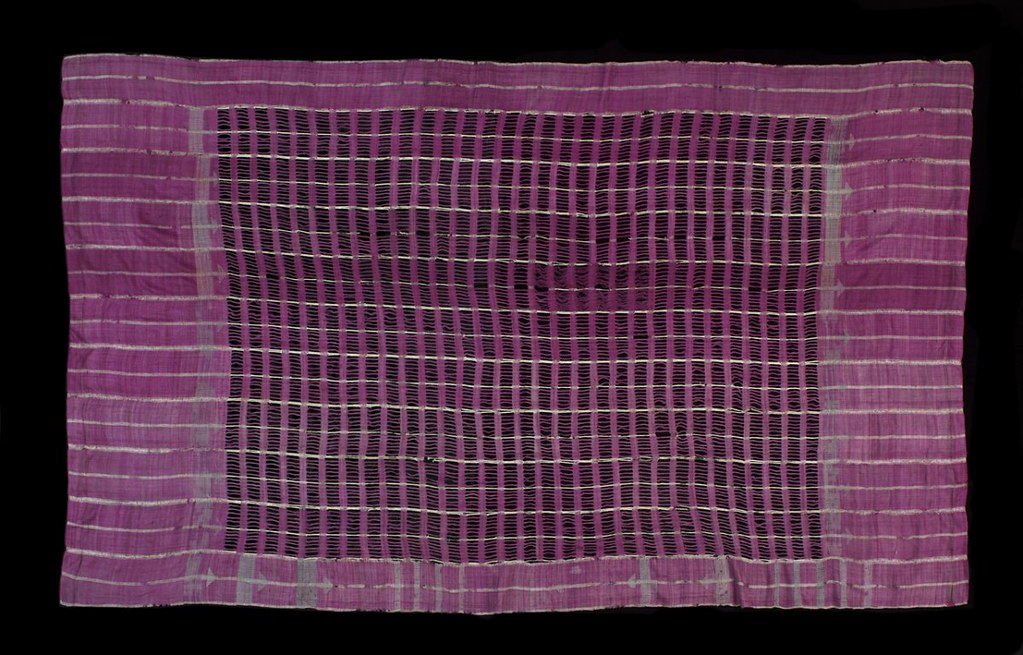
 'Nineteenth century silk shawl. Woven from magenta silk "alaari" that reached Nigeria through the trans-Saharan caravan trade, used for both warp and weft, with narrow stripes of white handspun cotton at the centre and selvedge of each strip. A central block of openwork patterning, in which holes are created in the strip by tying groups of warp threads with an extra weft, provides the main decorative feature of this shawl type.' More
'Nineteenth century silk shawl. Woven from magenta silk "alaari" that reached Nigeria through the trans-Saharan caravan trade, used for both warp and weft, with narrow stripes of white handspun cotton at the centre and selvedge of each strip. A central block of openwork patterning, in which holes are created in the strip by tying groups of warp threads with an extra weft, provides the main decorative feature of this shawl type.' More
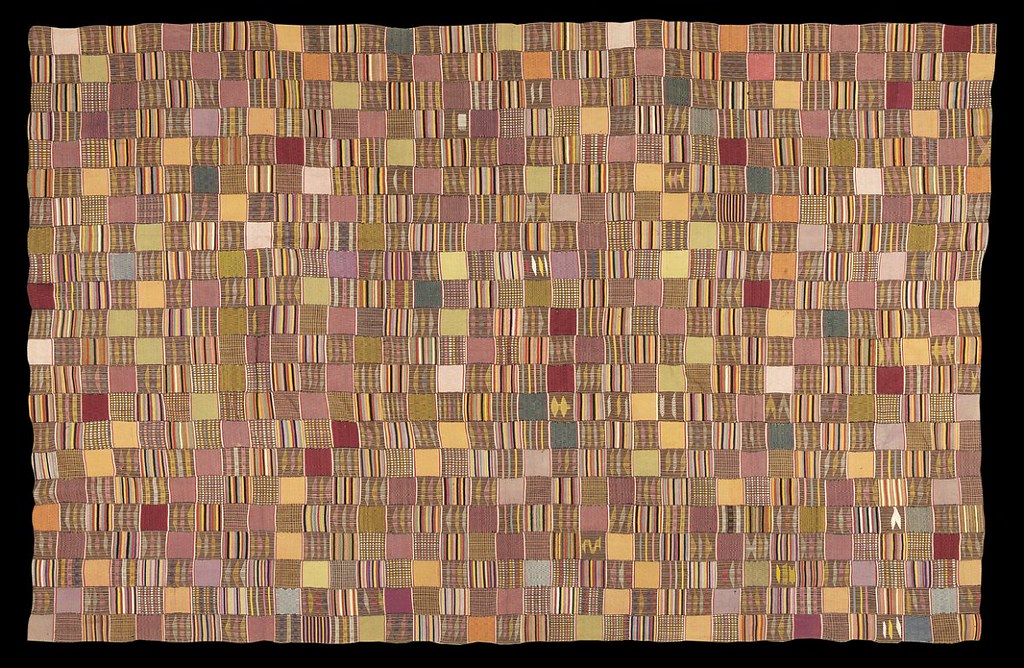
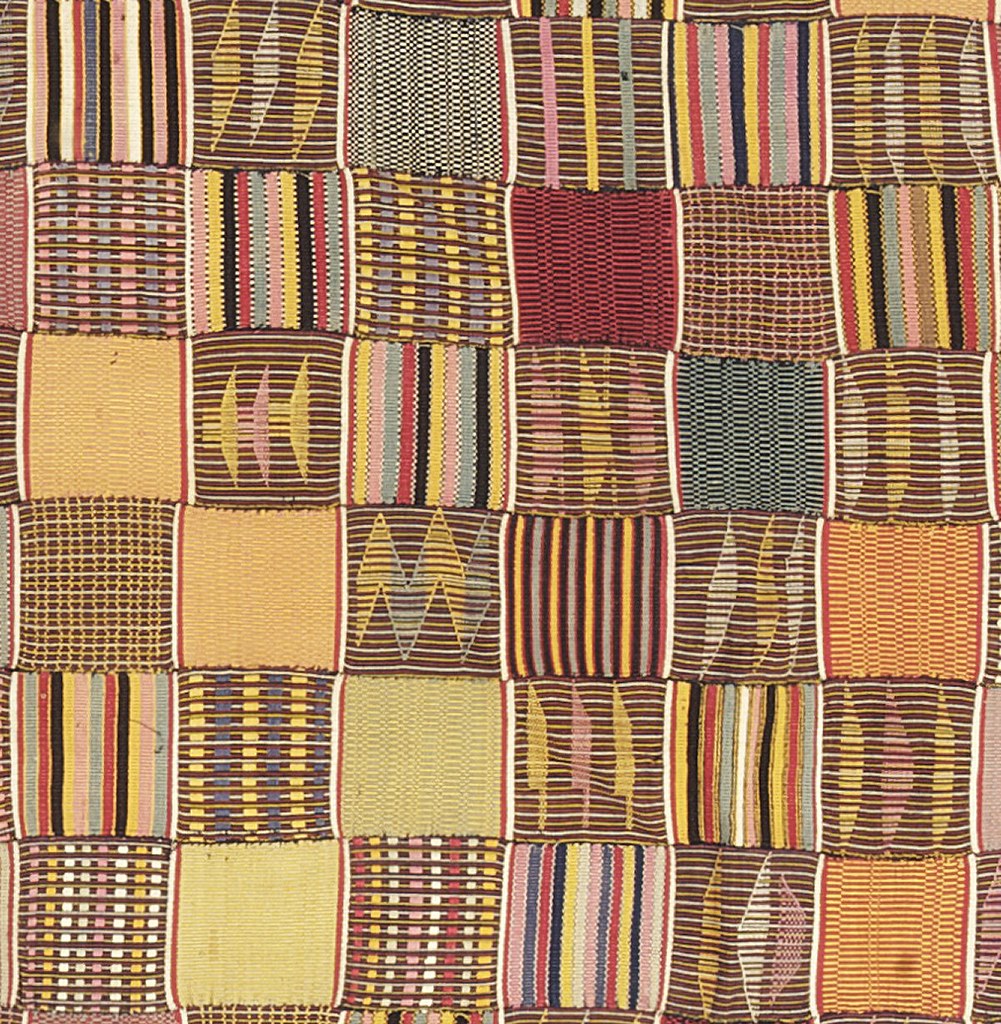 Ewe Kente. Dates from circa 1930-50. More
Ewe Kente. Dates from circa 1930-50. More
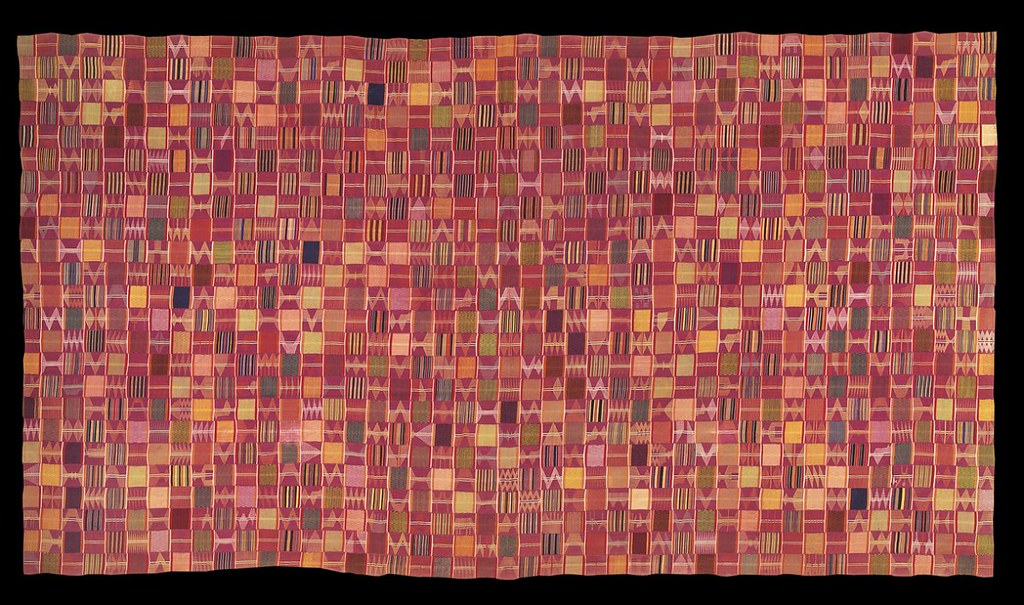
 Ewe Kente chief’s cloth (circa 1900) 'Cloths with this level of decoration were extremely expensive to commission and would only have been worn by the wealthiest men' More
Ewe Kente chief’s cloth (circa 1900) 'Cloths with this level of decoration were extremely expensive to commission and would only have been worn by the wealthiest men' More
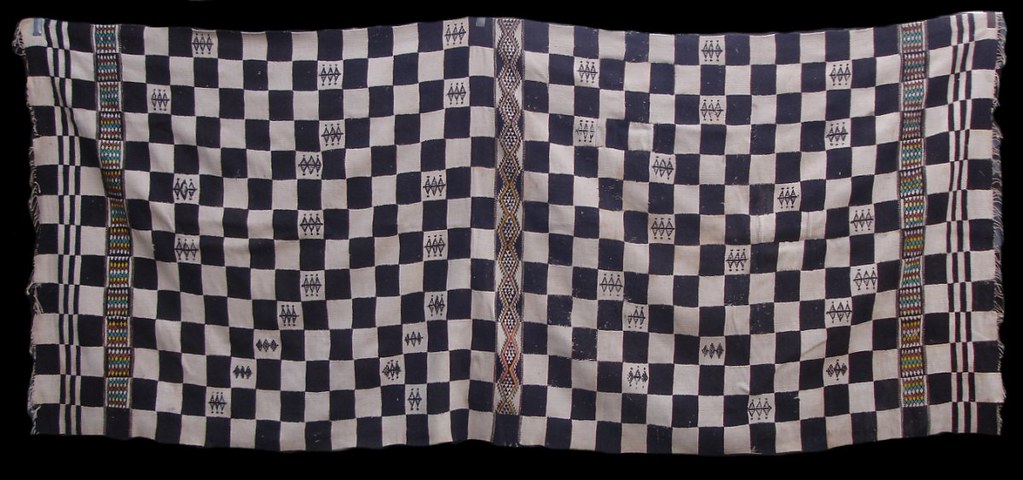
 'Unusual early C20th blanket cloth from Mali.' More
'Unusual early C20th blanket cloth from Mali.' More
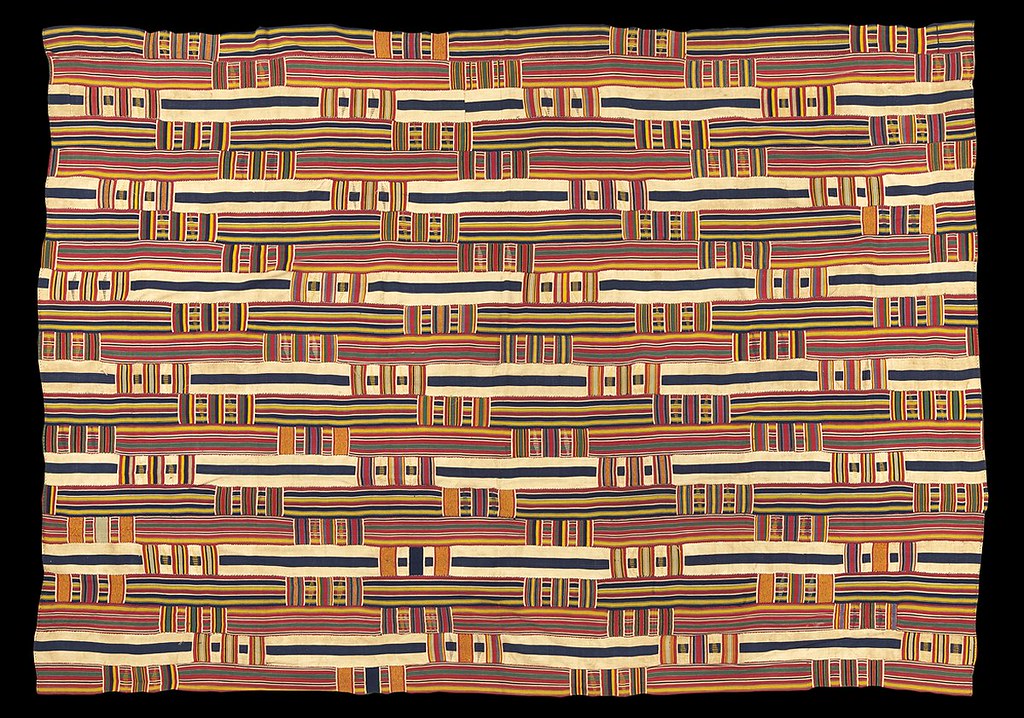
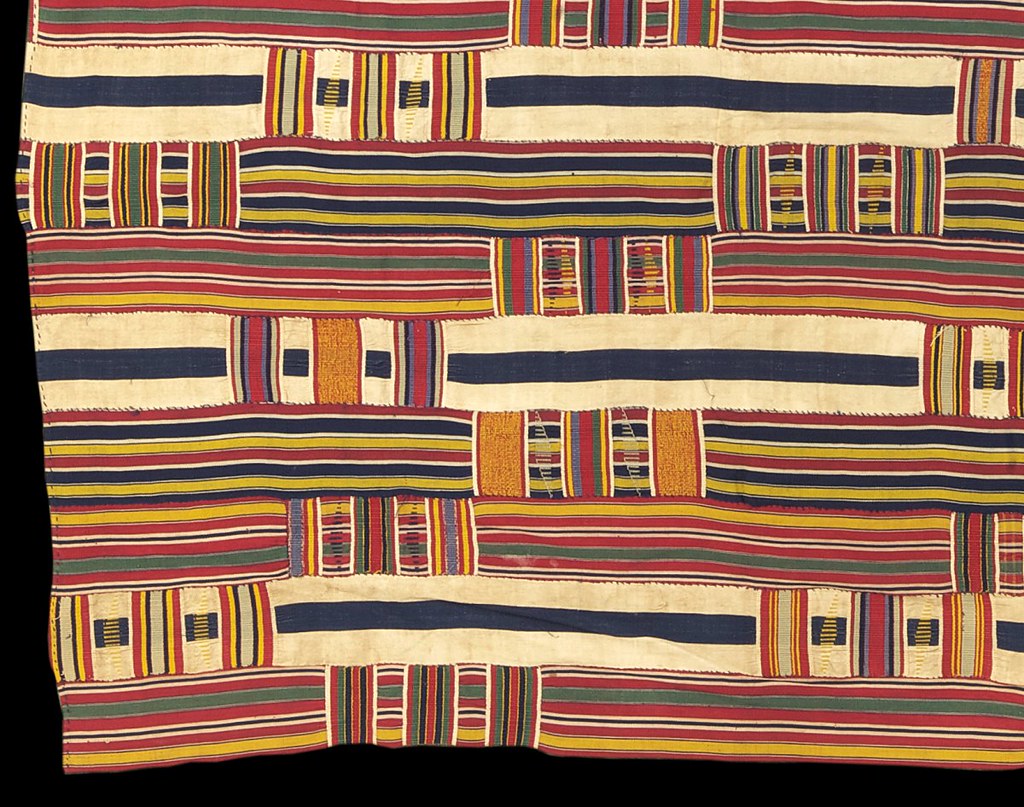 Ewe Kente (Circa 1900-20) 'Interesting early mixed strip cloth with three different warp striped designs and an irregular layout that offsets the weft pattern bands across the cloth. The grouping of weft bands into clusters of three rather than pairs is an archaic style that suggests an early date for this piece.' More
Ewe Kente (Circa 1900-20) 'Interesting early mixed strip cloth with three different warp striped designs and an irregular layout that offsets the weft pattern bands across the cloth. The grouping of weft bands into clusters of three rather than pairs is an archaic style that suggests an early date for this piece.' More

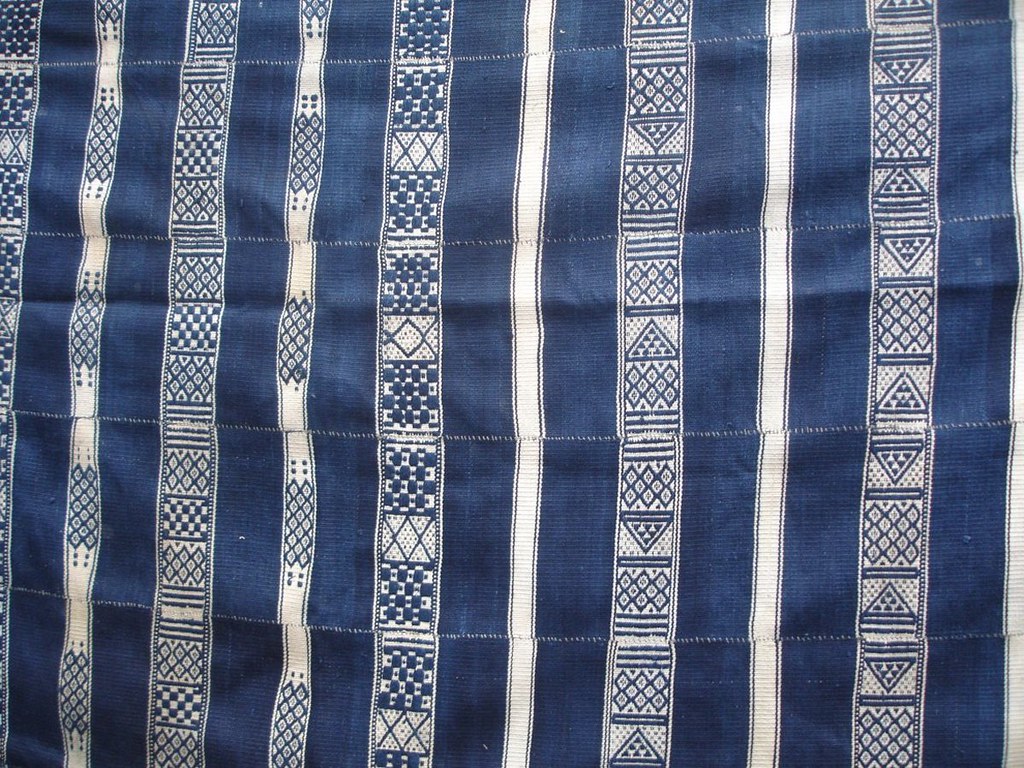 'Fine early to mid C20th cotton blanket in excellent condition. Most of this "family" of blue and white cotton blankets are shared by many of Mali's peoples, and while their weaver's are mainly members of or descended from the Fulani associated weaver's "clan" called Maabo, the cloths were also used by other groups such as the Bamana, Soninke, Dogon etcetera. They were also prized in Ghana for centuries and old examples are more often collected there than in Mali. This one has an exceptionally complex range of motifs, is woven with a hand spun cotton weft on a machine spun warp. Measurements: 209cm x 135cm' More
'Fine early to mid C20th cotton blanket in excellent condition. Most of this "family" of blue and white cotton blankets are shared by many of Mali's peoples, and while their weaver's are mainly members of or descended from the Fulani associated weaver's "clan" called Maabo, the cloths were also used by other groups such as the Bamana, Soninke, Dogon etcetera. They were also prized in Ghana for centuries and old examples are more often collected there than in Mali. This one has an exceptionally complex range of motifs, is woven with a hand spun cotton weft on a machine spun warp. Measurements: 209cm x 135cm' More
 'Superb Ewe chief’s cloth with supplementary weft float decoration in every available space between rectangular blocks of weft faced stripes throughout. Dates from circa 1920-40s. Size: 333cm x 178cm' More
'Superb Ewe chief’s cloth with supplementary weft float decoration in every available space between rectangular blocks of weft faced stripes throughout. Dates from circa 1920-40s. Size: 333cm x 178cm' More
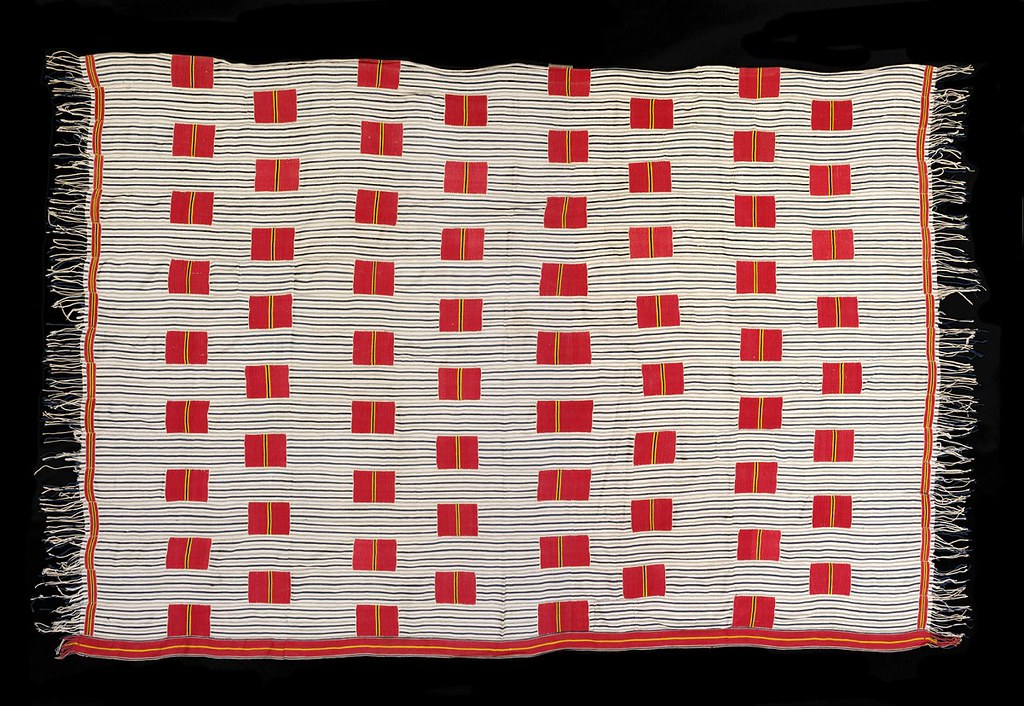
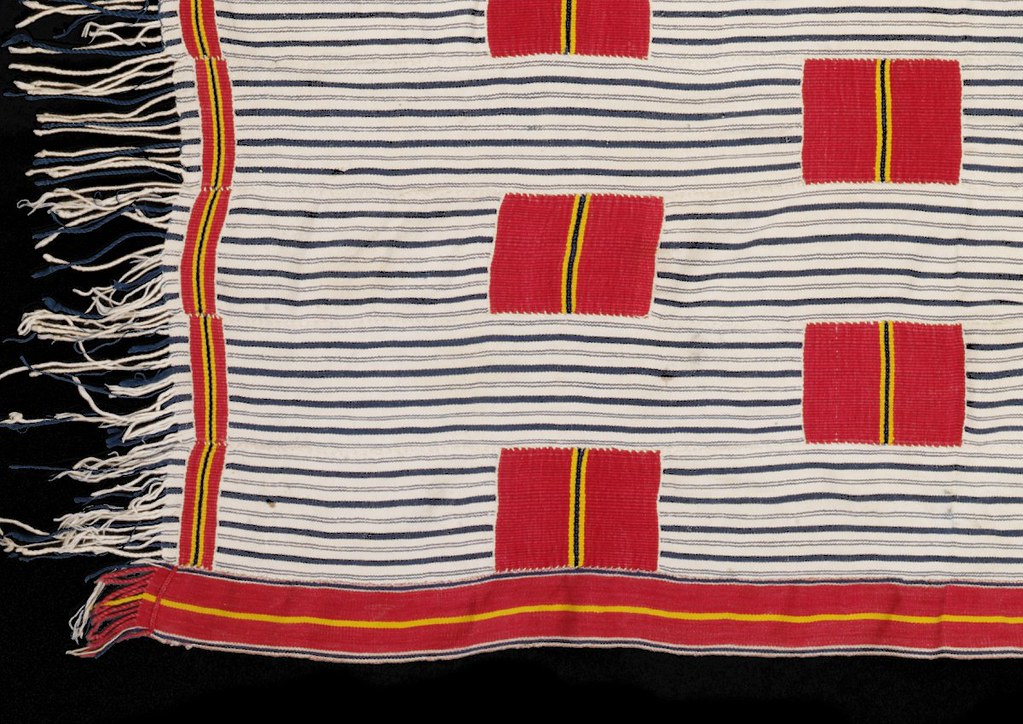 'Interesting Ewe man's cloth in an early style with blocks of red weft faced patterns on a blue and white striped ground. Measures 223cm x 155cm' More
'Interesting Ewe man's cloth in an early style with blocks of red weft faced patterns on a blue and white striped ground. Measures 223cm x 155cm' More
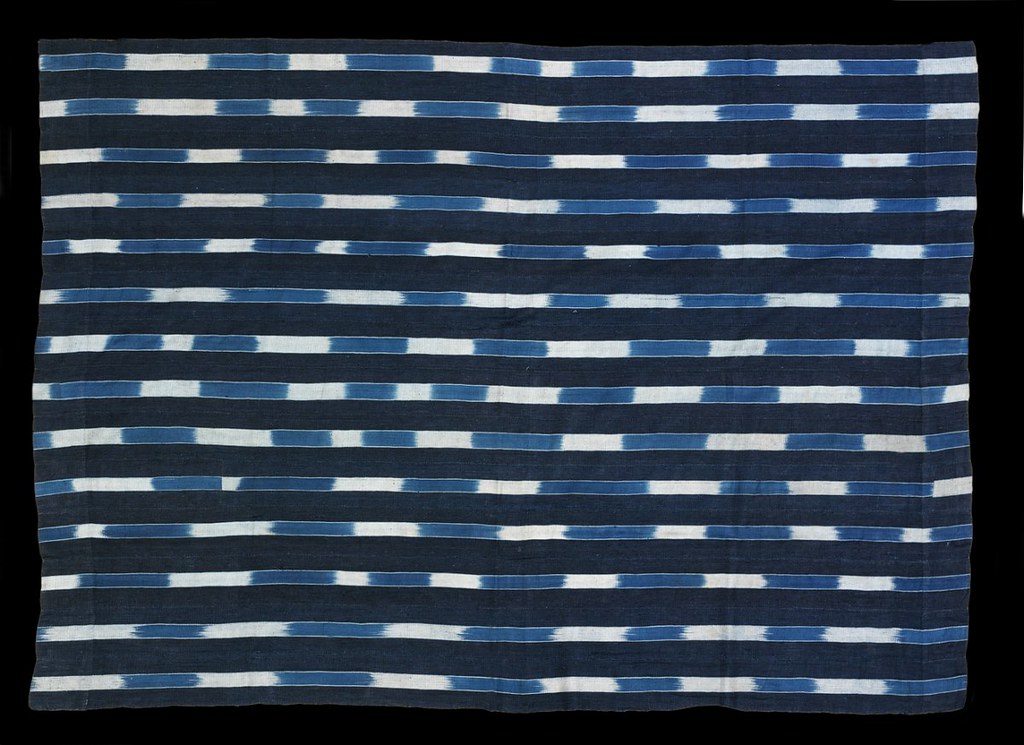 'Fine early C20th Nigerian Yoruba ikat patterned aso oke wrapper cloth, with bold ikat warp strip framed by hand spun cotton ground with the prestigious small check "etu" or "guineafowl" design. The cloth is hand stitched throughout. Dates from circa 1920s-30s. Measurements: 201cm x 138cm.' More
'Fine early C20th Nigerian Yoruba ikat patterned aso oke wrapper cloth, with bold ikat warp strip framed by hand spun cotton ground with the prestigious small check "etu" or "guineafowl" design. The cloth is hand stitched throughout. Dates from circa 1920s-30s. Measurements: 201cm x 138cm.' More
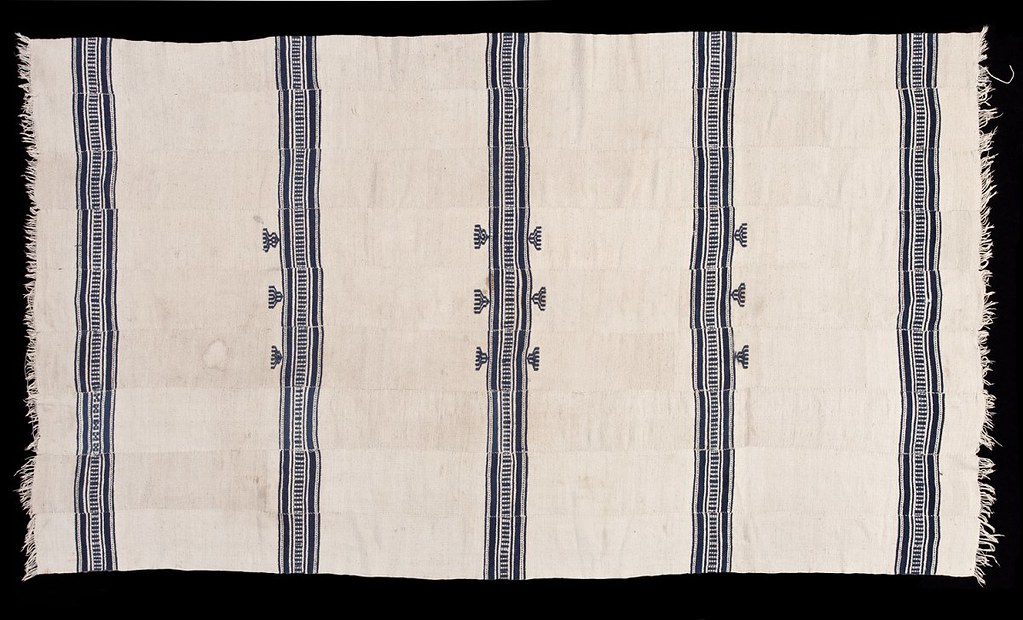 'Very rare style of large thick hand spun cotton prestige blanket, most likely woven by a Fulani weaver. Blue and white cotton cloths and blankets are used by many Malian peoples including Fulani, Dogon, and Bamana, but most are the work of Maabube weavers, a "clan" of specialist weavers attached to Fulani nobility. Dating from early to mid C20th this cloth was collected in Ghana where Malian blankets have been traded for centuries. It is made up of nine strips, with sets of simple supplementery weft motifs in the central 3 strips. No similar examples of this design are known. Measurements: 241cm x 135cm' More
'Very rare style of large thick hand spun cotton prestige blanket, most likely woven by a Fulani weaver. Blue and white cotton cloths and blankets are used by many Malian peoples including Fulani, Dogon, and Bamana, but most are the work of Maabube weavers, a "clan" of specialist weavers attached to Fulani nobility. Dating from early to mid C20th this cloth was collected in Ghana where Malian blankets have been traded for centuries. It is made up of nine strips, with sets of simple supplementery weft motifs in the central 3 strips. No similar examples of this design are known. Measurements: 241cm x 135cm' More

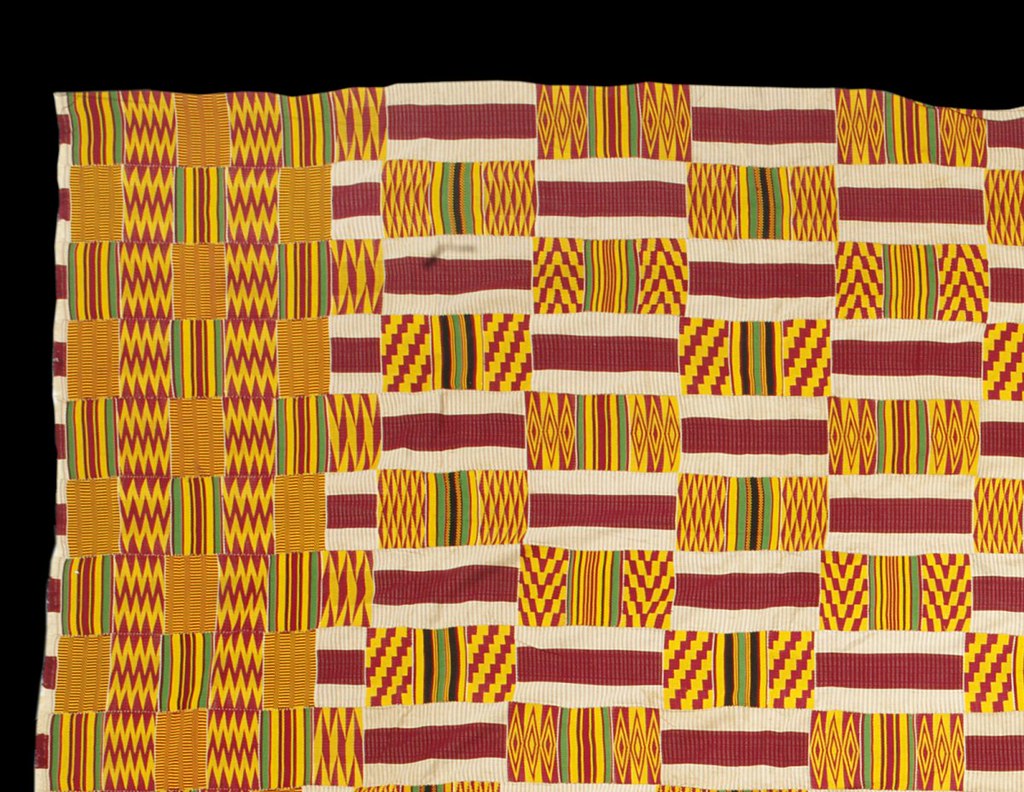 Ansante Kente (circa 1920) 'Superb example of the highest quality of Asante silk weaving. I assess the quality of Asante kente primarily on the scale and variety in the weft faced patterns - an exceptional example should have a wide range of motifs built up of very well executed small scale shapes rather than larger blocks of colour. [...] Their relative scarcity can be attributed to the fact that top pieces were woven in very small numbers for royal use and were property of the stool rather than the individual ruler. [...] The pattern is called "Aberewaben" - "Aberewaben was a woman of the Asenie clan who lived in the time of Kwabia Amanfi (about 1600.) This cloth [pattern not actual cloth] used to be worn by the Adonten chief (leader of the centre of Ashanti army)" See R. S. Rattray "Religion and Art in Ashanti" (Oxford 1927) p239 and Fig 127 #38 on page 240 for pattern name. To be clear, it is a silk example of this skill and complexity that is extremely scarce not the pattern itself - later rayon examples with simpler motifs are relatively common. Measurements: 343cm x 229cm' More
Ansante Kente (circa 1920) 'Superb example of the highest quality of Asante silk weaving. I assess the quality of Asante kente primarily on the scale and variety in the weft faced patterns - an exceptional example should have a wide range of motifs built up of very well executed small scale shapes rather than larger blocks of colour. [...] Their relative scarcity can be attributed to the fact that top pieces were woven in very small numbers for royal use and were property of the stool rather than the individual ruler. [...] The pattern is called "Aberewaben" - "Aberewaben was a woman of the Asenie clan who lived in the time of Kwabia Amanfi (about 1600.) This cloth [pattern not actual cloth] used to be worn by the Adonten chief (leader of the centre of Ashanti army)" See R. S. Rattray "Religion and Art in Ashanti" (Oxford 1927) p239 and Fig 127 #38 on page 240 for pattern name. To be clear, it is a silk example of this skill and complexity that is extremely scarce not the pattern itself - later rayon examples with simpler motifs are relatively common. Measurements: 343cm x 229cm' More

No comments:
Post a Comment